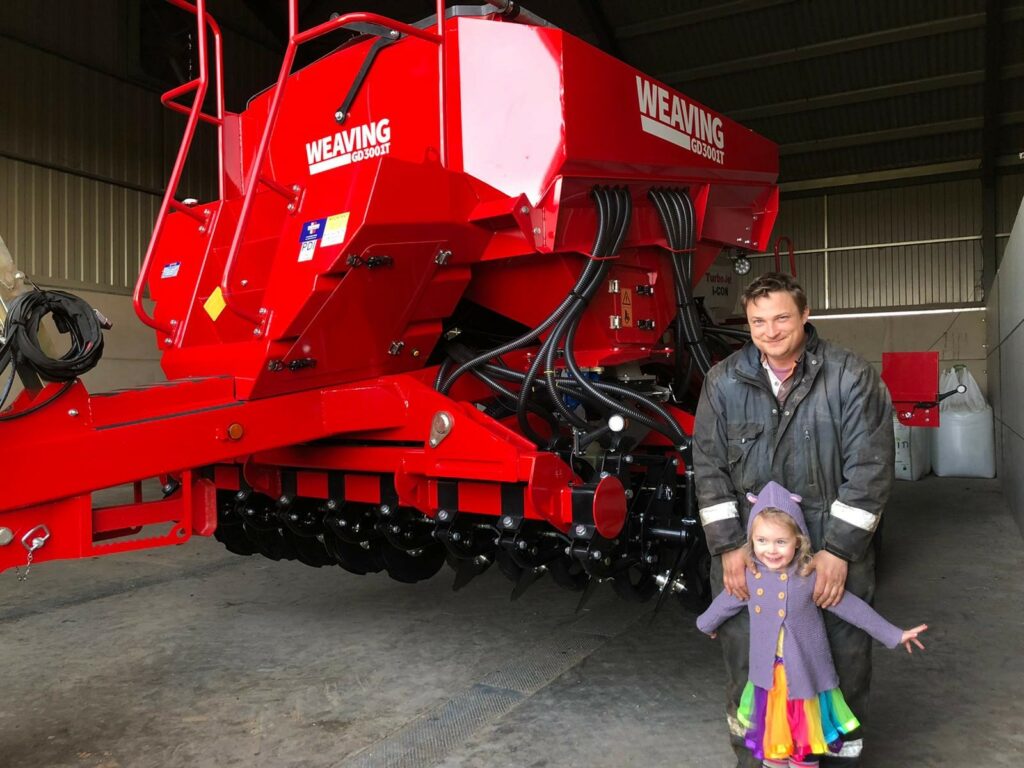Article written by Weaving Machinery
See more of Weaving Machinery at Direct Driller @Cereals 2024

Tim Smith of Smith Farms, Somerset explains why he chose the Weaving GD Drill as he made the switch from Strip-till to Direct Drilling as well his learnings along the way…
I have been running a trailed Weaving GD on our 550-acre medium to heavy beef and arable farm for nearly 3 years moving on from a strip-till drill. My focus is to be predominantly zero till, but with the flexibility to carry out low disturbance subsoiling, mole draining or light discing where necessary and still follow with the GD.
The main reason I chose the GD was that it ticked all of the boxes in terms of a 3-metre trailed machine with all the capabilities of a larger model such as dual hoppers, total integration of Avadex/slug pellets etc. and arrived ready to go without any further modification. I also liked the angled slot closure as it has meant the seed is always covered under a shelf even in drying ground conditions. It also felt reassuring to buy a product from a family-owned British company with hundreds of units successfully on the ground already.
We are currently 50% zero-till, with the other 50% aimed towards zero-till next year after a reset, with focus on maintaining soil health to reduce or eliminate mechanical intervention where we can in the future.
We found the main benefits from using the GD and direct drilling include;
• reduced blackgrass (through low disturbance but also better results from pre-emergence)
• more consistent spring cropping (through better moisture retention)
• more forgiving ground conditions meaning we can travel when we could not before
• fuel and time savings (from running just 1 machine through the ground).
In the event of crop failure, there are still roots and residue from the previous crop, untouched in the ground, rather than leaving bare soil. With the GD we have the ability to plant a high biomass winter cover crop and drill spring crops straight into it successfully.
Wisdoms we have gathered so far and would share with other perspective operators would be; start with crops and varieties that have good vigour and are known to suit zero-till, variable seed rate drilling is especially helpful, donʼt be afraid of using slug pellets pre or post where necessary, ensure compaction, drainage issues etc. are sorted before fully committing to zero-till and finally, the way the land is treated throughout the year will affect how successful the next crop is.